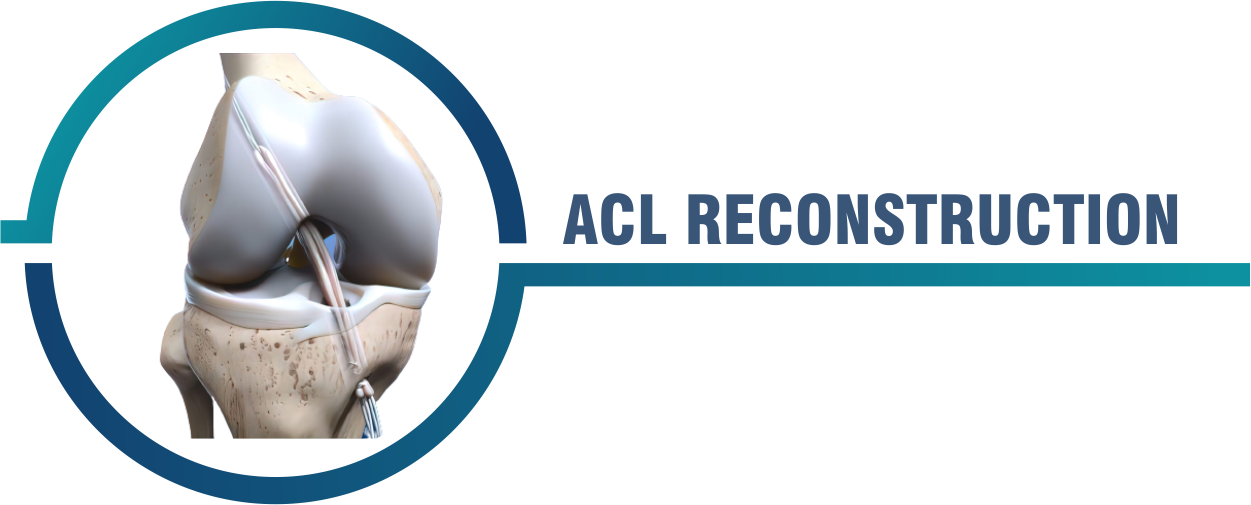
About ACL Reconstruction
Anterior Cruciate Ligament Reconstruction, also known as an ACL reconstruction, is a surgical procedure used to repair the knee's main ligament. The tibia or shines bone is kept in place by the ACL. In the event that this ligament ruptures, the knee may give way, especially during strenuous physical activity. The ACL must be rebuilt by the tissue, which must replace it, as part of the reconstruction. Depending on the extent of the ACL tear and the patient's lifestyle, surgery may be necessary.
Various Graft Types for ACL Reconstruction
- Autografts: These are tendons that are extracted from the patient's own body; often, these tendons come from the quadriceps, hamstring, or patellar ligaments.
- Allograft: Tendon is taken from the deceased donor . Autografts are typically favored over allografts since they have a lower chance of breaking again and potential contamination is also less likely. Autografts for the hamstring ligament have an additional benefit in that they heal over time, strengthening the bond.
Symptoms
- Less Movement: When the ACL is torn, some people find it more difficult to bend and flex their knees than they would normally be able to.
- Walking: This symptom makes you wonder if you're losing your knee joint sooner than you should be. In this circumstance, you must not apply pressure to your damaged limb.
- Swelling: within the first 24 hours following an injury, this is the condition most likely to occur. Normal individuals raise their legs by putting them on a pillow and applying ice to their knees.
- Pain: Minor injuries may not be painful, but you will feel tenderness along the length of your knee joint. While others have trouble standing or applying pressure to the hurt limb.
Risk Factor
- Blood Clots; bleeding from the surgical site; and infection connected to surgery.
- Knee discomfort, stiffness, or weakness persists even after ACL Replacement Surgery.
- Loss of knee mobility or discomfort when doing so.
- Inability to alleviate symptoms.
- Some patients may experience shortness of breath, nausea, vomiting, or allergic reactions as a result of the anesthesia.
Investigations
- Complete medical examination, including X-rays to determine the fracture.
- The routine test determines whether you are physically fit for the surgery.
- The MRI is used to confirm the ACL injury so that the damaged knee evaluation can be completed effectively.
| Procedure |
India (Price in USD) |
Turkey (Price in USD) |
Dubai (Price in USD) |
| ACL Reconstruction | 3500 | 3700 | 11200 |
| Revision ACL Reconstruction | 3500 | 3500 | 10100 |
The estimated days in the hospital are 5 days and 12 days outside the hospital in the country.
Note : This is an approximate cost and may vary depending on various condition of the patient health after physical evaluation.
Treatment Options
Side Effects
- Graft does not heal.
- Growth plate damage, especially in young children.
- Risk of viral infection HIV or hepatitis in allograft reconstruction.
- Knee instability and stiffness.
- Patellar pain, especially if the autogenous patellar tendon.
- Nerve, muscle, or blood vessel damage at the surgical site.
- Weakness and rupture of the patellar tendon during harvest for autograft.
Benefits
Success Rate
ACL surgery is very safe, with a very high success rate of over 98% and very low risk factors. However, the percentage also depends on the patient case and the surgeon experience.
